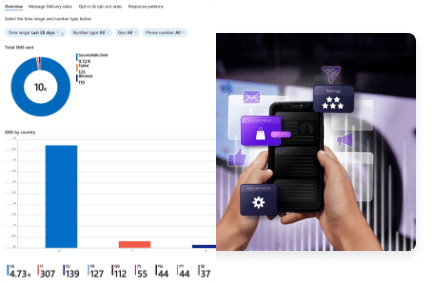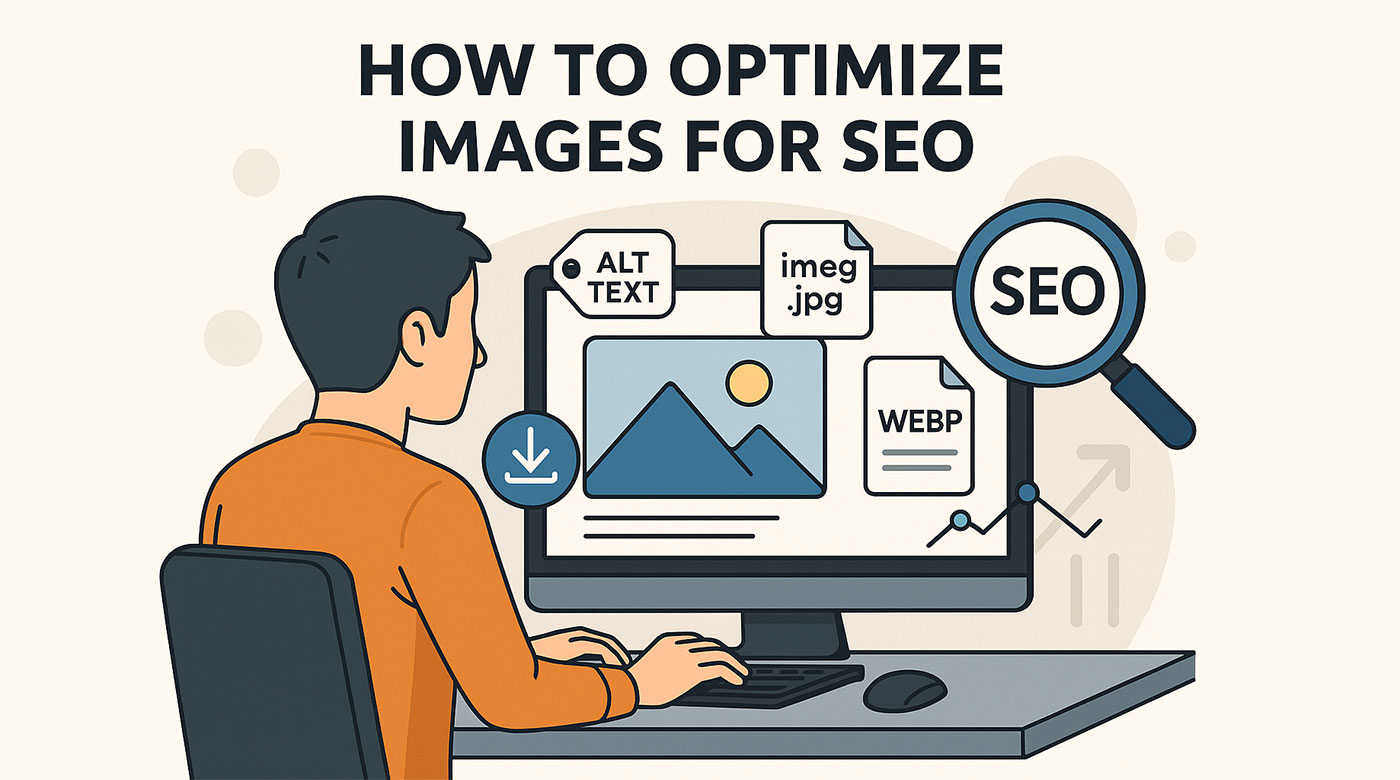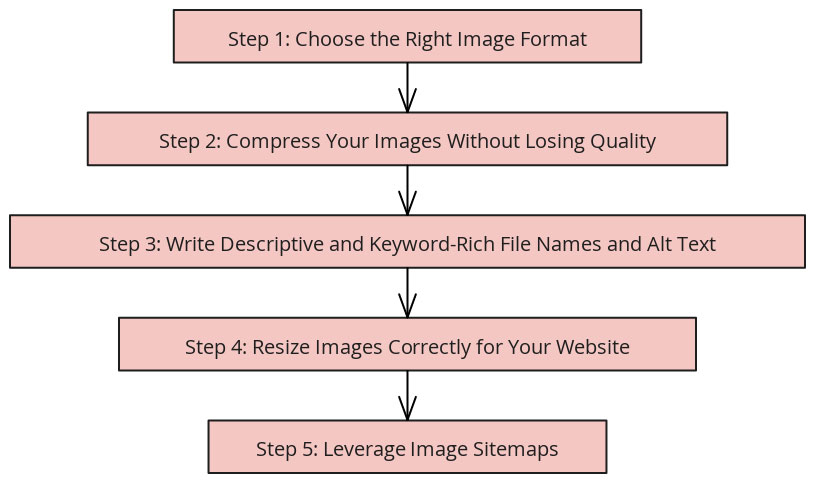As a small business owner in Australia, you know that a great website is key to success. But what you might not know is that the images on your site could be holding you back from ranking on the first page of Google. In a world where every millisecond counts, a slow-loading website can cost you customers, and a lot of that slowness can be traced back to unoptimised images.
So, how to optimise images for SEO? It might sound technical, but it’s actually a straightforward process. In this comprehensive guide, we’ll walk you through the essential steps to get your website’s images in top shape, boosting your site’s speed, improving its ranking, and giving your customers a better user experience.
What is Image Optimisation and Why Does it Matter for SEO?
Image optimisation is the process of reducing an image’s file size without sacrificing its quality. Think of it like packing a suitcase for a long trip—you want to fit as much in as possible, but you also want it to be light enough to carry easily. For your website, a lighter image file means a faster-loading page, which is crucial for both your customers and for Google.
Search engines like Google use page speed as a ranking factor. They want to show users the best, most efficient websites. If your pages are slow because of large images, Google will penalise you with a lower search ranking. On the other hand, well-optimised images lead to a better user experience, lower bounce rates, and ultimately, a higher ranking. Plus, it also helps with accessibility, ensuring your website is usable for everyone, including those with visual impairments.
A Step-by-Step Guide to Optimise Images for SEO
Ready to get started? Follow these simple steps to ensure every image on your website is working for you, not against you.
Step 1: Choose the Right Image Format
The format of your image file plays a big role in its size and quality. The three most common formats are JPEG, PNG, and WebP.
- JPEG (or .jpg) is best for photographs and images with a lot of colours. It uses a “lossy” compression, which means it reduces the file size by discarding some information. This is perfect for complex images where the lost detail won’t be noticeable.
- PNG (or .png) is ideal for images with transparent backgrounds, like logos or icons. It uses a “lossless” compression, so it keeps all the original data, resulting in a higher-quality image but also a larger file size.
- WebP (or .webp) is a newer format developed by Google. It provides superior compression for both photographs and images with transparency, making it an excellent choice for a faster website. Many modern websites now use WebP as their default.
Step 2: Compress Your Images Without Losing Quality
Once you have the right format, the next step is to compress the image file size. There are a number of free online tools and plugins that can help you do this automatically. These tools work by removing unnecessary data from the image file, making it much smaller and faster to download.
Some popular free tools include TinyPNG and Squoosh. They are incredibly easy to use: you simply upload your image, and the tool does the rest. For those using a content management system like WordPress, there are also plugins that can automatically compress images as you upload them, saving you time and effort.
Step 3: Write Descriptive and Keyword-Rich File Names and Alt Text
This is one of the most important steps to optimise images for SEO and it’s one that many small businesses miss. Search engines can’t “see” your images, so they rely on the information you provide.
- File Names: Before you upload an image, rename the file to something descriptive. For example, instead of IMG_12345.jpg, use blue-custom-kitchen-renovation-sydney.jpg. This tells Google exactly what the image is about and can help it rank for relevant searches. Always use hyphens to separate words.
- Alt Text (Alternative Text): This is the text that appears if an image fails to load. More importantly, it’s what screen readers use to describe an image to visually impaired users. When writing alt text, be descriptive, specific, and include your keywords naturally. A good alt text for our example image would be: A close-up shot of a modern blue custom kitchen renovation in Sydney, Australia. Avoid simply stuffing keywords in—the alt text should always be helpful and relevant.
Step 4: Resize Images Correctly for Your Website
Have you ever uploaded a huge photo from your camera phone straight to your website? That 4000×3000 pixel image might look great, but it’s a massive drain on your page speed. Before you upload, you should always resize your images to the dimensions they will actually be displayed at on your website. For most blog posts or product pages, a width of around 1000-1200 pixels is more than enough. You can use any image editing software to easily resize your photos before you upload them.
Step 5: Leverage Image Sitemaps
An image sitemap is a file on your website that helps search engines find all the images on your site. While Google will eventually find most of your images on its own, an image sitemap gives it a helping hand, ensuring every image is discovered and indexed. This is especially helpful if your website uses JavaScript for images or if they aren’t linked directly from your site’s main content.
Common Image SEO Mistakes to Avoid
Now that you know the best practices, here are a few common mistakes to steer clear of:
- Forgetting Alt Text: Not only does this hurt your SEO, but it also makes your website less accessible.
- Using Huge Image Files: Don’t rely on your website to automatically resize an image. Always do it yourself first to ensure the file size is as small as possible.
- Keyword Stuffing: While keywords are important, don’t try to cram too many into your alt text or file names. It looks spammy to both search engines and users.
- Using Generic Images: Unique, high-quality photos perform much better in search results than stock photos you’ve found online.
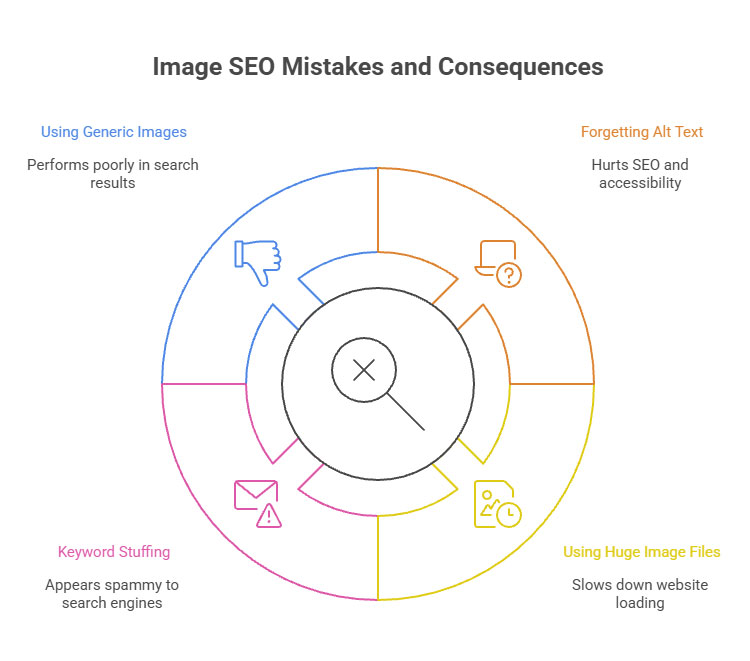
Beyond Image Optimisation: The E-Web Marketing Advantage
Image optimisation is a critical part of a healthy website, but it’s just one piece of a much larger SEO puzzle. For a small business, managing a comprehensive SEO strategy can be time-consuming and complex. You have a business to run, and the last thing you need is to spend all your time on technical SEO tasks.
This is where E-Web Marketing comes in. We offer a range of affordable and reliable SEO services designed specifically for Australian small businesses. We take care of the technical stuff, so you can focus on what you do best.
| Service Tier | Best For | Features Included | Typical Outcome |
|---|---|---|---|
| Foundation SEO | New or small websites | Technical site audit, keyword research, local SEO optimisation | Improved local rankings and foundational online visibility |
| Growth SEO | Expanding small businesses | All Foundation features, plus content strategy, on-page optimisation, and strategic link-building | Increased organic traffic, higher keyword rankings, and lead generation |
| Performance SEO | Competitive markets & large websites | All Growth features, plus advanced technical SEO, in-depth competitor analysis, and comprehensive monthly reporting | Dominant keyword positions, significant business growth, and a strong market presence |
Conclusion
Learning how to optimise images for SEO is one of the most effective, simple things you can do to boost your website’s performance. By following these steps—choosing the right format, compressing files, writing descriptive alt text, and resizing your images—you’ll create a faster, more user-friendly website that search engines love.
However, a truly successful online presence requires more than just image optimisation. It demands a holistic strategy that covers everything from content to technical site health.
If you’re a small business owner in Australia and you want to take your SEO to the next level, our team at E-Web Marketing is here to help. Contact us today for a free consultation and let’s discuss how we can help your business thrive online.

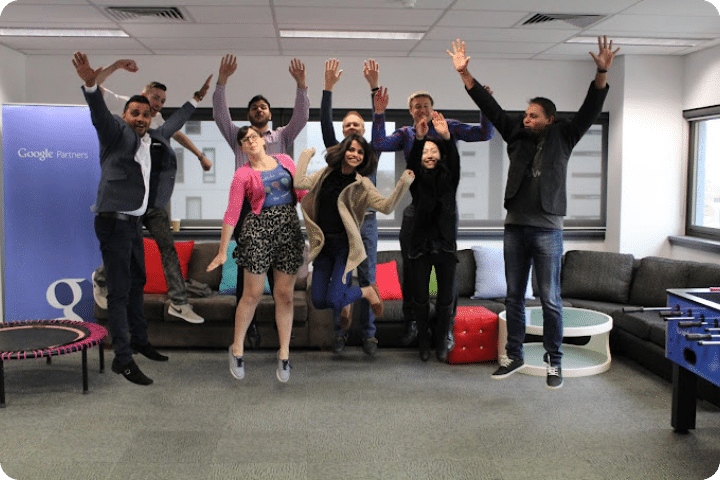



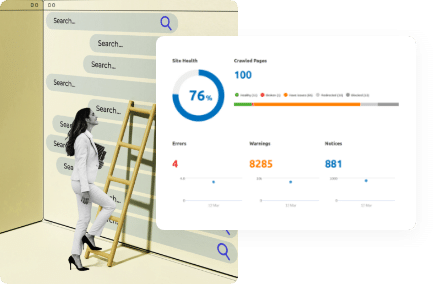
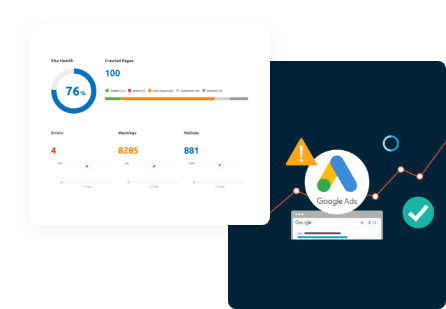
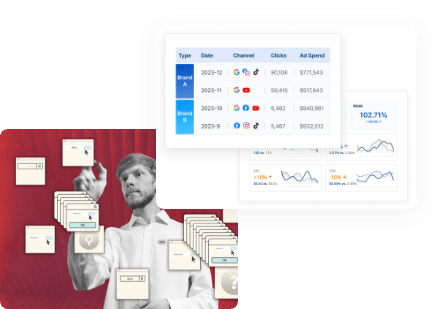


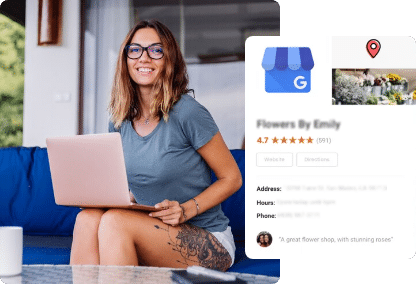



 Search Engine Optimization
Search Engine Optimization Google Ads
Google Ads Meta Ads
Meta Ads SMS Automation
SMS Automation Website Design
Website Design Virtual Marketing Manager
Virtual Marketing Manager

